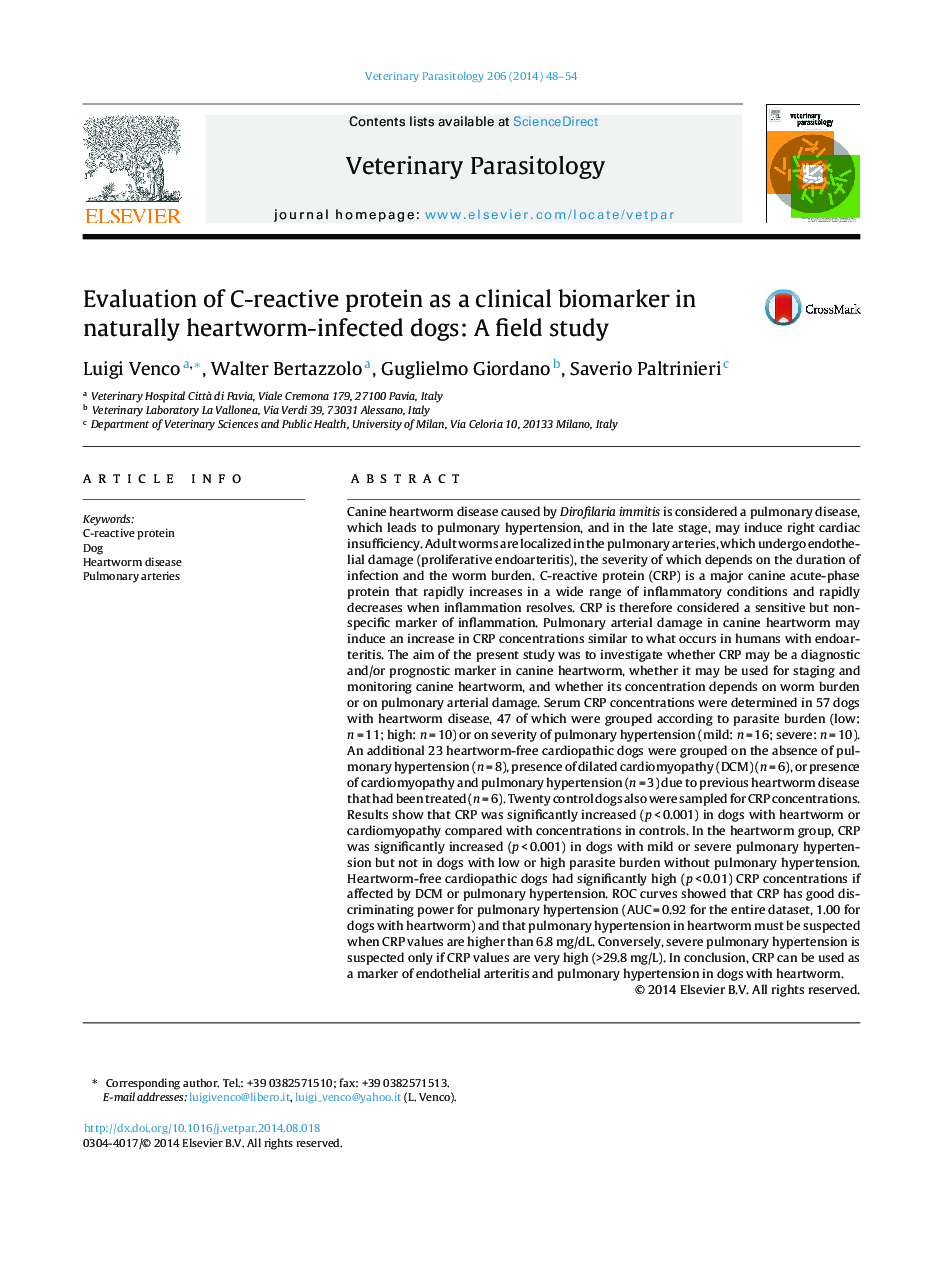| کد مقاله | کد نشریه | سال انتشار | مقاله انگلیسی | نسخه تمام متن |
|---|---|---|---|---|
| 5802665 | 1555679 | 2014 | 7 صفحه PDF | دانلود رایگان |

Canine heartworm disease caused by Dirofilaria immitis is considered a pulmonary disease, which leads to pulmonary hypertension, and in the late stage, may induce right cardiac insufficiency. Adult worms are localized in the pulmonary arteries, which undergo endothelial damage (proliferative endoarteritis), the severity of which depends on the duration of infection and the worm burden. C-reactive protein (CRP) is a major canine acute-phase protein that rapidly increases in a wide range of inflammatory conditions and rapidly decreases when inflammation resolves. CRP is therefore considered a sensitive but nonspecific marker of inflammation. Pulmonary arterial damage in canine heartworm may induce an increase in CRP concentrations similar to what occurs in humans with endoarteritis. The aim of the present study was to investigate whether CRP may be a diagnostic and/or prognostic marker in canine heartworm, whether it may be used for staging and monitoring canine heartworm, and whether its concentration depends on worm burden or on pulmonary arterial damage. Serum CRP concentrations were determined in 57 dogs with heartworm disease, 47 of which were grouped according to parasite burden (low: n = 11; high: n = 10) or on severity of pulmonary hypertension (mild: n = 16; severe: n = 10). An additional 23 heartworm-free cardiopathic dogs were grouped on the absence of pulmonary hypertension (n = 8), presence of dilated cardiomyopathy (DCM) (n = 6), or presence of cardiomyopathy and pulmonary hypertension (n = 3) due to previous heartworm disease that had been treated (n = 6). Twenty control dogs also were sampled for CRP concentrations. Results show that CRP was significantly increased (p < 0.001) in dogs with heartworm or cardiomyopathy compared with concentrations in controls. In the heartworm group, CRP was significantly increased (p < 0.001) in dogs with mild or severe pulmonary hypertension but not in dogs with low or high parasite burden without pulmonary hypertension. Heartworm-free cardiopathic dogs had significantly high (p < 0.01) CRP concentrations if affected by DCM or pulmonary hypertension. ROC curves showed that CRP has good discriminating power for pulmonary hypertension (AUC = 0.92 for the entire dataset, 1.00 for dogs with heartworm) and that pulmonary hypertension in heartworm must be suspected when CRP values are higher than 6.8 mg/dL. Conversely, severe pulmonary hypertension is suspected only if CRP values are very high (>29.8 mg/L). In conclusion, CRP can be used as a marker of endothelial arteritis and pulmonary hypertension in dogs with heartworm.
Journal: Veterinary Parasitology - Volume 206, Issues 1â2, 15 November 2014, Pages 48-54